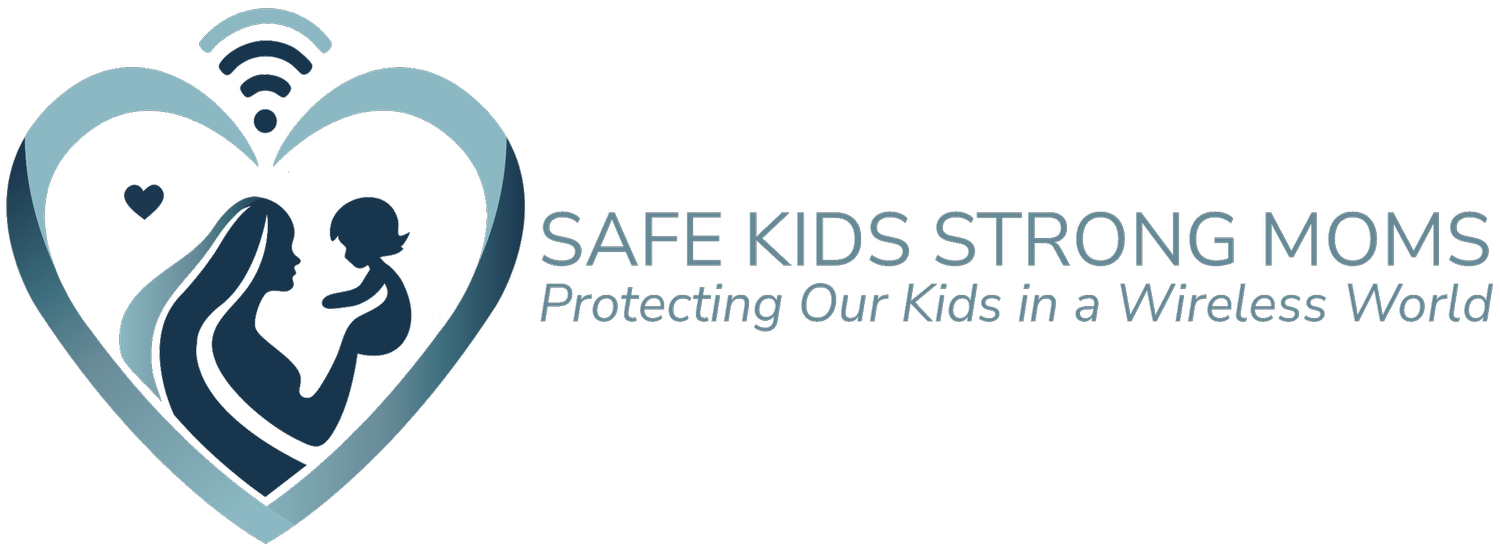EHS in Children: A Practical Guide for Parents
If you’ve ever noticed your child coming home with unexplained headaches, struggling to fall asleep, or seeming more irritable after a day at school, you might be left wondering if something deeper is at play. For some families, these patterns raise questions about electromagnetic hypersensitivity (EHS)—a condition where individuals report symptoms they believe are triggered by exposure to everyday technology like Wi-Fi, tablets, and cell phones.
Research increasingly shows that children are more biologically vulnerable to RF (radiofrequency) radiation than adults. Their thinner skulls, developing nervous systems, and greater cumulative exposure make them more susceptible to potential effects. Emerging studies suggest links between early exposure and neurological, cognitive, and emotional health concerns.
Understanding What You’re Seeing
Children often don’t have the language or awareness to connect how they feel to their environment. That doesn’t make their symptoms any less real.
You might notice:
Your child wakes up tired
They complain of headaches, stomach aches, or anxiety with no clear cause
Their mood shifts after time spent indoors, especially around devices or at school
As a parent, tuning into these patterns and trusting your observations can be the first step in supporting your child.
Opening the Conversation
Talking to your child about how they’re feeling can be tricky, especially if they don’t have the words to describe their symptoms. Instead of asking broad questions like, “Are you feeling okay?”, try more natural, observation-based approaches that gently invite dialogue.
For example:
“You look a bit tired—how did you sleep last night?”
This invites your child to talk about rest without pressure and can open up a conversation about their overall well-being.“I noticed you looked a little tired after school—did anything wear you out today?”
This question connects to a specific observation and shows genuine care, making it easier for your child to share if something felt off.
These kinds of thoughtful, low-pressure check-ins can help your child feel safe opening up especially if they aren’t sure how to describe what’s wrong.
Let your child know that all feelings are valid and that you’re there to listen, not to judge. If they mention discomfort, even if it seems minor, thank them for sharing and reassure them that you want to help them feel their best. Sometimes, just being heard can ease anxiety and open the door to more honest conversations in the future.
Practical Steps Parents Can Take
You don’t need to overhaul your home or eliminate technology to make a difference. Small, thoughtful changes can help your child feel more comfortable and supported:
Stay aware of patterns: Pay attention to when symptoms show up and what might have been happening beforehand. Look for links between screen time, device use, and discomfort—without making your child feel watched.
Create Tech-Free Zones: Designate areas in your home—like bedrooms or the dinner table as tech-free spaces. This helps reduce overall exposure and gives your child’s mind and body a break.
Encourage Regular Breaks: Build short, frequent breaks into homework or screen time routines. Even a few minutes of movement or outdoor play can make a difference in how your child feels.
Prioritize Sleep Hygiene: Remove devices from bedrooms at night and establish calming bedtime rituals. Good sleep supports both physical and emotional well-being.
Consult Healthcare Professionals: If symptoms persist or interfere with daily life, bring your observations to your child’s doctor. A clear picture of when and how symptoms occur can help guide meaningful support.
Advocacy and Empowerment
You don’t need to have all the answers to make a meaningful difference. By paying attention, asking thoughtful questions, and making small changes at home, you’re advocating for your child’s health and comfort.
As a parent, your instincts and observations are invaluable. Trust them, stay curious, and remember that supporting your child—whether through tech breaks, open conversations, or seeking professional advice—is always the right step forward.

